The visual effects supervisor from ILM’s Vancouver studio shares insights about helping create new characters and bringing the streets of New York City to life.
By Mark Newbold
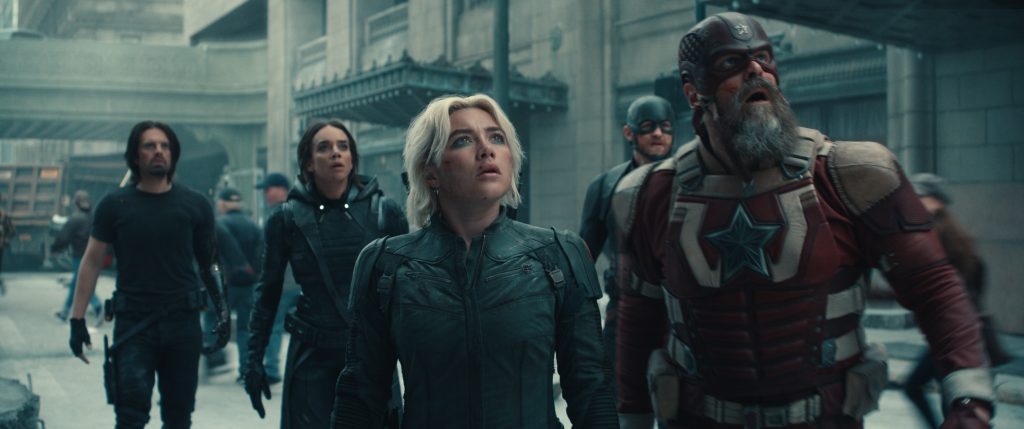
Proudly displaying the most famous typographical symbol since George Lucas placed an acute accent over the “e” in Padmé Amidala, Thunderbolts* arrived in cinemas on May 2, 2025, to a fanfare of critical praise, bringing together a gaggle of questionably motivated heroes, including Florence Pugh as Yelena Belova, Sebastian Stan as Bucky Barnes, David Harbour as Alexei Shostakov, Wyatt Russell as John Walker, Hannah John-Kamen as Ava Starr, Lewis Pullman as Bob Reynolds, Olga Kurylenko as Antonia Dreykov, and Julia Louis-Dreyfus as Valentina Allegra de Fontaine. Director Jake Schreier (who also helmed Star Wars: Skeleton Crew’s fifth episode) led the effort to create an adventure that thrills, engages, delights, and amuses in equal measures.
Thunderbolts* is a story that not only details the rise of a motley crew of rogues into the heroes of Manhattan but also the war Bob Reynolds fights internally as he battles to free himself from his dark alter ego, Void, with the help of his newfound friends. Industrial Light & Magic’s visual effects supervisor Chad Wiebe (Captain America: Brave New World [2025], Obi-Wan Kenobi [2022], Thor: Ragnarok [2017]), joins ILM.com to discuss the challenges of not only bringing a tentpole release to the big screen but also creating striking new effects for fans of the Marvel Cinematic Universe (MCU).
“ILM’s work started back in May 2023,” Wiebe tells ILM.com, “when development work began with Jay Cooper (visual effects supervisor on The Eternals [2021] and The Creator [2023]) and a small team of artists, primarily to develop the look of Void. Then the WGA [Writers Guild of America] strike happened, and production went on hiatus for a while. ILM’s involvement picked up again in February of 2024. That’s when I got involved.”

There can be any number of elements that bring an experienced supervisor onto a show. Wiebe explains how appropriate skill sets, personal interests, and timing align when taking on a new show.
“The production visual effects supervisor Jake Morrison and I have worked together a number of times and it’s always been a very collaborative experience, so I jumped at the opportunity to work together again,” Wiebe says. “On top of that, Sentry is a powerful new character in the MCU with a strong comic book legacy, and I really enjoy developing ideas for new characters.
“This was a very different film to the ones you typically see within the MCU,” Wiebe continues. “Jake Schreier’s vision was that it had to be grounded and based on physicality, not magic and energy and all the things you typically associate with superhero films. He didn’t want it to feel like any movie that we’ve seen before, so that instantly attracted me.”
As with any Marvel project set within the five New York City boroughs of Manhattan, Brooklyn, Queens, The Bronx, and Staten Island, the city is essentially a character in its own right. Whether it’s Spider-Man in Queens, Captain America in Brooklyn, or the Baxter Building in Manhattan, each location must feel authentic. In Thunderbolts*, we return to the former Avengers Tower, which ILM had to place within real-world Manhattan.
“There are two ways to look at it,” explains Wiebe. “One aspect is the kind of data acquisition you need in order to make these very tangible environments look realistic as if you’re standing there yourself, and the other is augmenting it with some very iconic structures such as the Watchtower, which needs to sit seamlessly within that environment. It’s a tricky thing to do when it’s a city like New York that people are very familiar with. When you’re building locations and areas that have a real-world counterpart, you need to do your homework. You need to make sure you get all the reference material to make sure you’re depicting it in the most accurate way because people will instantly spot things if you’re trying to cheat or fudge the facts, and New York holds a very special place in people’s hearts, so doing it justice was very important.
“The fact that they based Avengers Tower around the MetLife Building in New York was a great starting point,” Wiebe continues. “The Avengers Tower we’ve seen in previous films retains the base of the MetLife building, but the departure that we took on Thunderbolts* was that we redesigned the base of the tower so it no longer utilized any of the MetLife Building. We use the same city block and footprint, but we replaced it from the ground up. Beyond Avengers Tower, we also had to build vast sections of the surrounding area. The key is in the details and making sure you collect enough reference material such as digital photography, aerial plates, LIDAR scans – the whole nine yards to get as much data as possible so we can build out this environment to be a true depiction of New York City.”
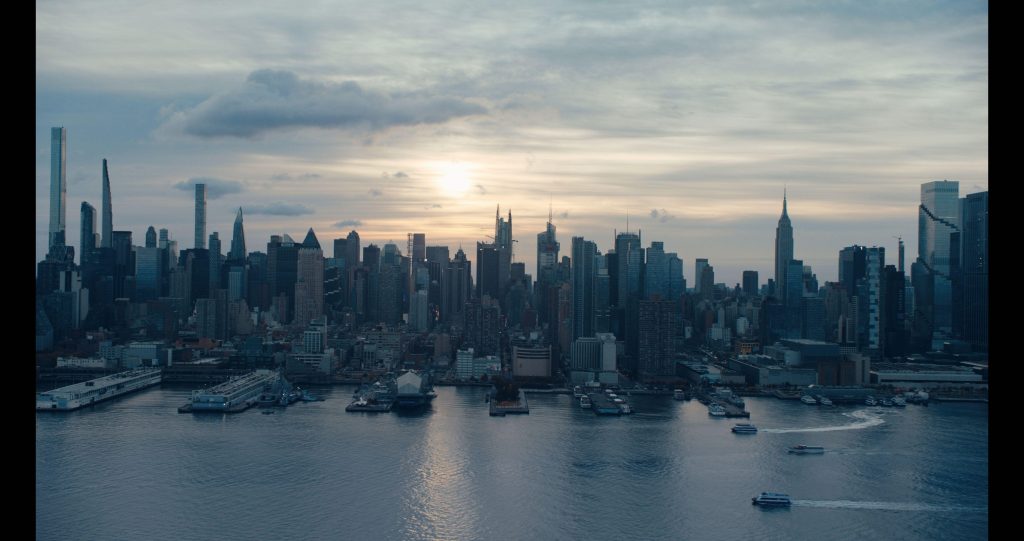

One of the most striking elements of Thunderbolts* is a new character in the MCU, Bob, and his dark alter ego, Void. Both thematically and visually, his soul-sucking powers are a powerful addition to the film, taking inspiration from both the comics and the film’s director, Jake Schreier. The task fell to the artists at ILM to bring these concepts to life.
“It was a unique challenge to visualize Void’s powers without leaning into anything too typical or too magical. The way Void turned people into shadowed silhouettes being a prime example. It needed to feel like a subtle but impactful event,” says Wiebe. “There were a surprising number of iterations that we went through to figure out that look. We spanned the full spectrum of ideas, going from something that felt like a single frame flash, to longer, drawn-out versions showing detailed shadows projected onto surfaces in a variety of different ways. We tried different aesthetics before we arrived on a quick but impactful effect that had a complexity to its simplicity, which also relied on the audio design to sell it as this somber but impactful moment.”
The process from concept to completion required numerous iterations and refinements.
“We started shadow dev with Jay Cooper all the way back in May of 2023, and that wasn’t too dissimilar from what we continued to do all the way up to the final months of the show,” Wiebe explains. “With a pivotal character such as Void, getting it to a 90% or 95% point of completion is the easy part, relatively speaking. It’s dialing those nuances in the last 5% or 10% that’s a very iterative and collaborative process.
“There were some key shots that went through dozens of iterations,” Wiebe continues. “How much of Lewis’s performance are we preserving? How much are we shrouding him in shadows? How much specularity do we want to retain from his costume? It’s a fine line. You want to ensure you’re staying true to the actor’s performance because it’s so well done, but you have this character that you also need to convey as a mysterious, shadowy void, so you want to add that mystery and aura surrounding him without going too far. There was a lot of back and forth to determine what that balance should be. Once you crack the code, then you’re good to start propagating that through your other shots, and then the dominoes fall a lot quicker. It’s an important part of the process that we need to go through to land on that final look.”
With Lewis Pullman’s performance at the heart of the sequence, Void required a mix of disciplines to bring the character to life.
“A lot of what you see of Void relied heavily on a 2D composite treatment, mixed with our CG asset when we needed to add specific details to certain areas….so it’s a hybrid approach,” notes Wiebe. “We utilized as much plate material of Lewis as we could. We also augmented it to get some of the details that you may not have had in the plate. If there are areas that we want to expose, say a little bit of costume detail or parts of his cheek that we want to expose a bit of lighting information on, we would utilize our digital asset to help with that. For some of the wider shots where he’s further away or doing things that you couldn’t necessarily do while filming, those would be our digital versions.”
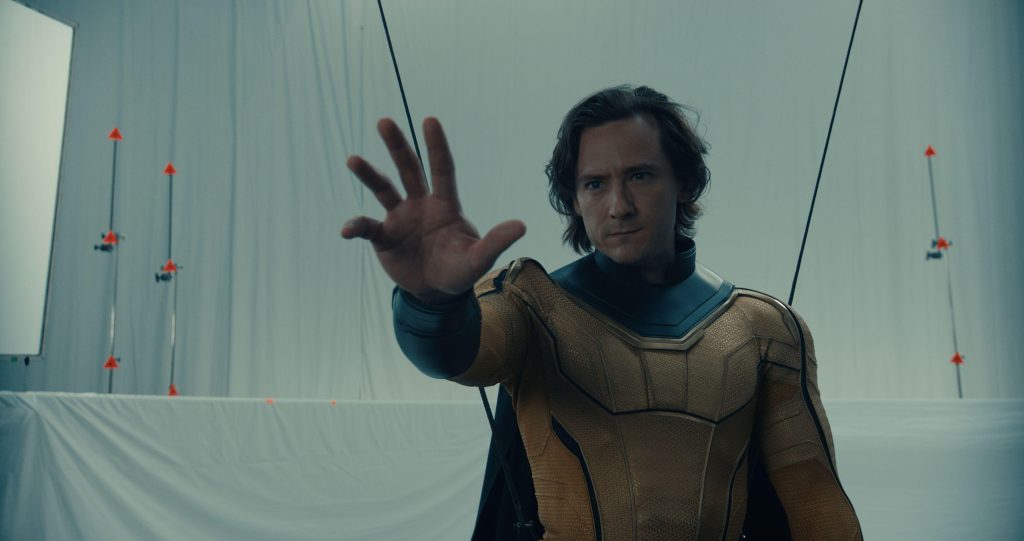
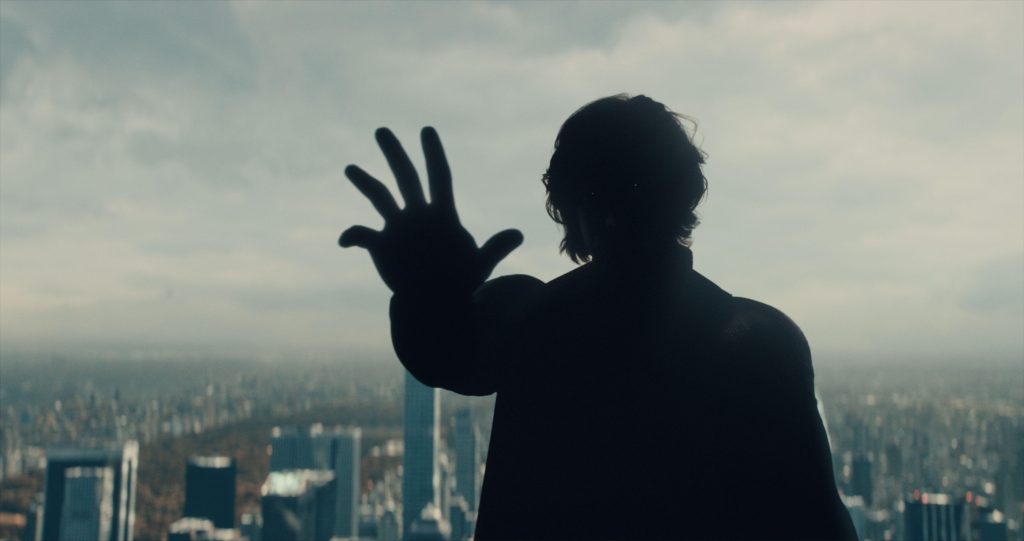
Work on projects like Thunderbolts*, with bespoke visual effects crafted for specific characters and powers, can lead to processes that are useful in future projects, something Wiebe is grateful for.
“Every project adds new tools to your tool belt that you can take from show to show. That’s what you build on, and that’s what you can offer up as things that you’ve already tried and have experience with. I’ve done a number of Marvel films, and there’s always a carryover of techniques, setups, and lessons that you learn from doing things a certain way that you try to improve the next time.
“In regard to Sentry (before he turns into Void), we really don’t know everything that he’s capable of yet, and I don’t think he does either,” Wiebe continues, “so a big part of Thunderbolts* was him figuring out what he was able to do and learning the extent of his powers. One of the key moments in the film was when he said to Valentina that he doesn’t need to take orders from her; why would a god take orders from a human? There were a lot of conversations about Sentry’s level of confidence and his attitude when he started realizing that he’s got these incredible powers. There was some exploration about how confident he should feel. Jake didn’t want him to necessarily come across as overly confident in his powers because he’s learning them from scratch, but he also wanted to play into Bob’s character, too, where he wasn’t a very assertive person. He obviously fell on hard times before becoming Sentry, so navigating through that was a bit of a challenge for him.”
Thunderbolts* doesn’t just feature Sentry. There’s also a burgeoning team of would-be superheroes to contend with. “Obviously, here you’re putting him up against a number of characters that have their own unique powers, and there are other superheroes that he shares attributes with,” Wiebe explains. “That was a consideration in this film, making sure we don’t mimic what’s already been seen with other characters. Sentry has unlimited powers; he can do a bit of what most of the other superheroes can do, so making sure that we didn’t share too much space with other distinct effects was key.”
Creating visual effects requires intense attention to detail and the necessity of watching a scene again and again and again, being as granular as possible to get everything exactly where it needs to be. Given that, Wiebe notes that because he already knows the story, “it can make it a bit more difficult to sit back and enjoy a project that you worked on at the movie theater,” as he puts it. “But the beauty of Thunderbolts* is that everything was so seamless; I was able to let it visually play out without any moments of scrutiny or second-guessing the decisions we made. It was very rewarding to finally see it on the big screen in all its glory with the final audio in a theatre full of people who were very excited to see it. There were people cheering and applauding at the end of the screening, which was super, super rewarding.”
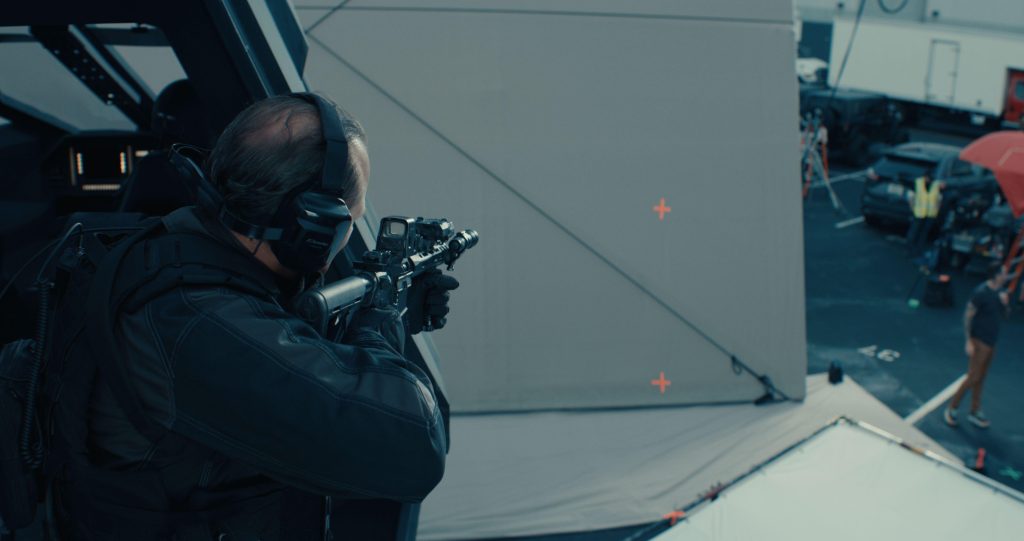
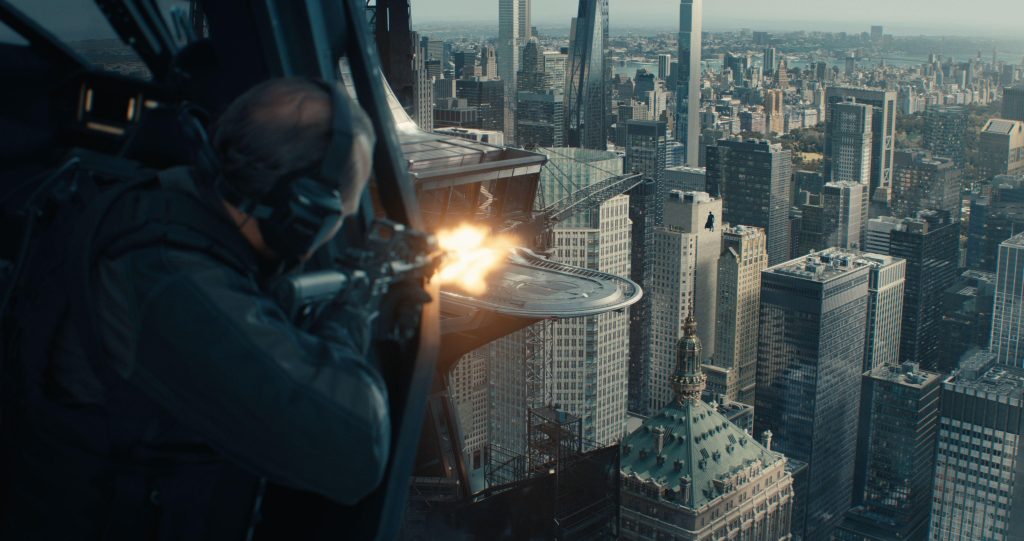
The film is planned, shot, edited, the visual effects completed, the sound layered on, and the music scored, but looking back on Thunderbolts*, there’s a key scene that stands out: the fight in the former Avengers Tower between Sentry and the Thunderbolts which is one continuous shot.
“We shot the Penthouse fight in three sections and spent months doing previs to map out where the cameras needed to be and determine our capacity to shoot within a confined set environment,” Wiebe explains. “When Sentry ‘Force pushes’ Red Guardian through the window and back, it’s one continuous 45-second shot up until the moment he throws both Ghost and Walker out of frame. That was months and months of pre-production followed by months and months of post-production work. It really was a labor of love between a number of different departments within ILM and everyone who was on set making it happen. In terms of things that we’re the proudest of, that oner is definitely right up there and something we’re promoting in order to help pull back the curtain and let people see all the work that went into it.”
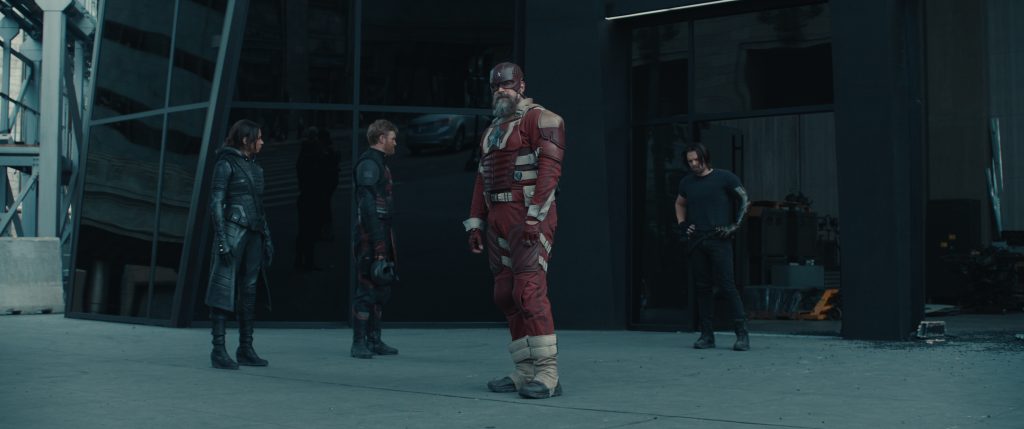
—
Mark Newbold has contributed to Star Wars Insider magazine since 2006, is a 4-time Star Wars Celebration stage host, avid podcaster, and the Editor-in-Chief of FanthaTracks.com. Online since 1996. You can find this Hoopy frood online @Prefect_Timing.